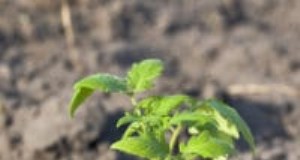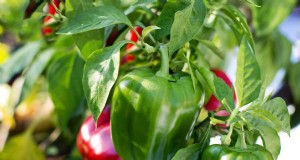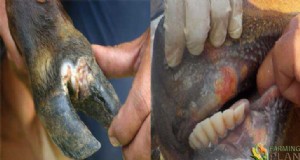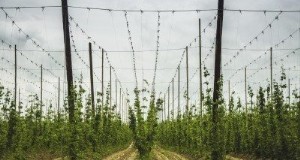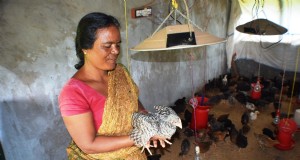
Diospyros virginiana
この記事の前に警告を付けて始めたいと思います。www.modernagriculturefarm.com私はアメリカガキの大ファンです。
リンゴやナシ、さらにはアジアの柿に、これらの1つを曜日を問わず持っていきます。
アメリカガキの公平な説明を探しているなら、 他の場所に向かう、 私の友人。
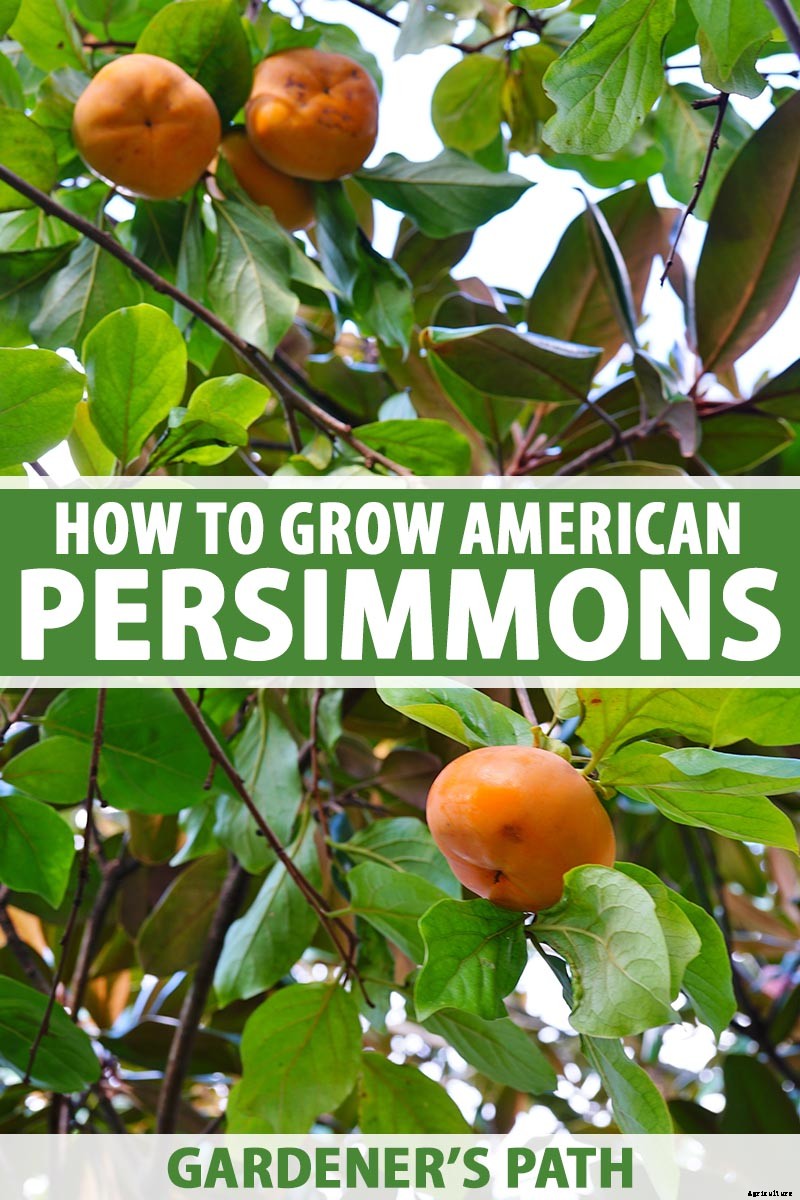
しかし、あなたが私のような筋金入りの支持者なら、 在来植物愛好家、 または単に庭に新しい種類の果物を追加することに興味がある人、 その後、あなたは正しい場所に来ました。
D. virginiana 私のためにすべてのマークを打ちます、 そして私はそれがあなたにも役立つと確信しています。
お手入れが簡単で、 他の特定の果樹(咳– 桃 –咳)が必要です。彼らはほぼすべての種類の土壌で成長することができ、時々十分な水が得られない場合はあなたを許します。
その恐ろしい想像上の怠慢にもかかわらず、 複雑で甘い味わいの驚くほど風味豊かなフルーツであなたに報酬を与えます。
熟した果実の風味を正確に説明するのは難しいですが、 でもそれはまるで熟した桃にシナモンとクローブをまぶしたようなものです キャラメルに包まれています。食感は想像できる最も天国のプリンのようです。
わかった、 はい–一口食べたことがあれば 未熟 収斂性の柿、 綿のようなものを決して忘れません、 タンニンがたっぷり入ったフルーツを味わうパッカリー体験。
アメリカの柿や「普通の」柿が親戚ほど愛されていないのは、それが理由のひとつだと思います。 D.カキ 、 アジアの柿 、 タンニンが少ない非収斂性の栽培品種が利用可能です。これらは食用になる前に非常に柔らかくなければなりません。
その上に、 果物はうまく行きません。それらは一般的に栽培されていません、 そして彼らのネイティブの範囲は彼らのアジアのいとこよりもはるかに小さいです。

食料品店でかわいいオレンジ色のオーブを購入したことがある場合は、 それがまだしっかりしている間にそれに噛まれた、 そしてそれ しませんでした あなたの口をパッカーにする、 それはアジアの果物でした。
「富有」や「八谷」など、この種の品種は遠いですが、 世界中ではるかに人気があり、 果物がよりよく移動するので間違いありません、 熟していない場合でも、特定の品種はまだおいしいです。
しかし、アメリカガキは非常に風味豊かです。木はいとこよりも害虫や病気に強いです、 寒さへの耐性も優れています。個人的には、 これらの果物には、より良い広報チームが必要だと思います。
それが起こるまで、 そのギャップを埋めるために最善を尽くします。改宗者になる準備はできましたか?
このガイドを読み終える頃には、 あなたはの賞賛を歌う準備ができています D. virginiana 。そして、あなたが正しい場所に住んでいるなら、 きっとあなたはあなたの庭に一本か二本の木を追加する準備ができているでしょう。
これが私たちが議論するすべてです:
学習内容
- アメリカガキとは何ですか?
- 栽培と歴史
- 伝搬
- 成長する方法
- 剪定、 トレーニング、 とメンテナンス
- 成長のヒント
- 選択する品種
- 害虫や病気の管理
- 収穫
- 保存
- レシピと料理のアイデア
- クイックリファレンス成長ガイド
私は「私を信じて」と言う人を自動的に信用しない傾向がありますが…私を信じてください!あなたが多くの注意と世話を必要としない果樹を探しているなら、 これです。
最適なフレーバーを得るために果物を選ぶときのコツをつかんだら、 収穫期が再び始まるまで、一年中、比類のないプチフルーツの味を夢見ています。
アメリカガキとは何ですか?
東柿とも呼ばれ、 ポッサムウッド、 アメリカの黒檀、 またはバターウッド、 アメリカガキまたはアメリカガキは、フロリダからコネチカット、アイオワからテキサスに広がる米国の南部と東部に自生しています。彼らはまた、カリフォルニアとユタの一部で自生しています。
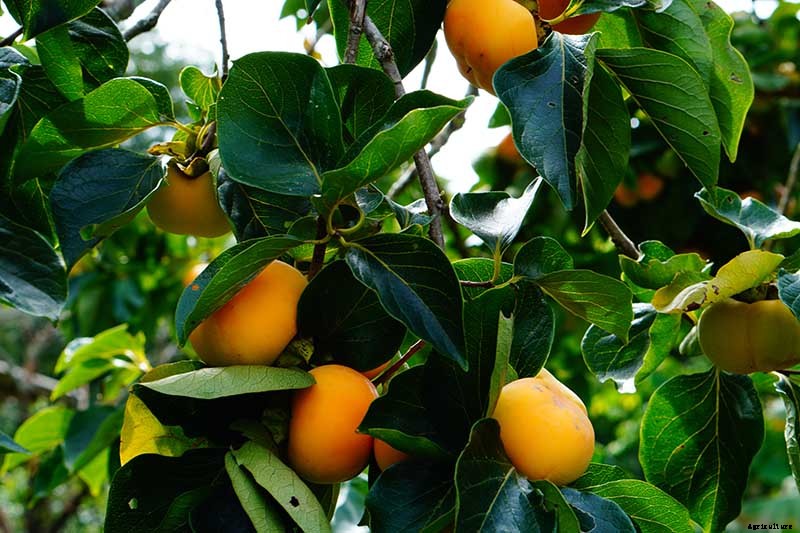
さらに、 あなたはそれらが今日オレゴンの果樹園で成長しているのを見つけることができます、 ワシントン、 アリゾナ、 とニューメキシコ。彼らはで最もよく育ちます USDA耐寒性ゾーン 5-9、 ゾーン4の寒い冬の気温に耐えるいくつかの品種があります。
属の名前 カキノキ ギリシャ語から「神々の実」を意味するように大まかに翻訳されるかもしれません。この属の食用種は、その風味が天国であるため、適切な名前が付けられていると思います。
黒檀科(カキノキ科)の一部、 彼らはアジアの柿と密接に関連しています( D.カキ )だけでなく、ブラックサポテを含む他のいくつかの食用種( D. digyna )、 ケガキ( D.変色 )、 マメガキ( D.ロータス )。
テキサス柿( D. texana )、 テキサスとメキシコ原産で、 小さな紫色の果実を生産する属の別の密接に関連したメンバーです。
アメリカの柿の木は、平均して30〜60フィートの高さに達します。 しかし、それらは最適な条件下で90フィート以上の高さに達する可能性があります。
樹木は通常、樹齢約7年になると、大量の果実を生産し始めます。 そして彼らの最も生産的な年齢はしばしば25から50歳の間です。彼らは150年まで生きることができます。
自家栽培者が利用できるほとんどの栽培品種は自家受粉ですが、 ほとんどの野生の木は雌雄異株です、 つまり、すべて男性またはすべて女性のいずれかの花を生成します。受粉には両方が必要です、 果物は女性だけが生産します。
葉はミディアムグリーン、 楕円形、 大きくて 長さ約6インチ、幅3インチ。秋に、 葉は地面に落ちる前に黄色または赤紫色に変わることがあります。
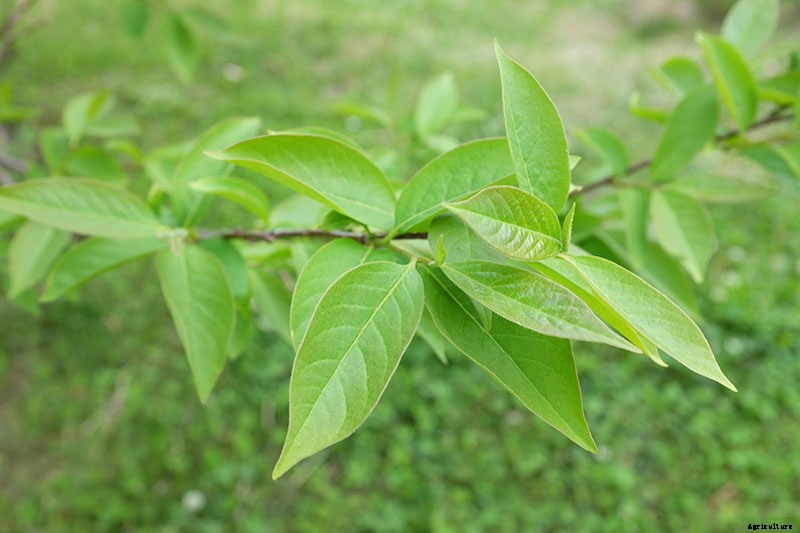
3月上旬から6月にかけて、大きなオフホワイトの花が咲くことがあります。 地域に応じて開花期の特定のタイミングで。
彼らは通常、他の多くの種類の果樹よりもシーズンの後半に開花するため、 通常、収穫時の収穫量に影響を与える晩霜について心配する必要はありません。
私の地域では4月下旬に木が咲きます。 オレゴンのゾーン8b、 これは最後の平均霜日よりかなり後です。
果実は9月上旬から12月にかけて熟します。 品種によって異なります。

成熟した果実は直径約1〜2インチで、 いくつかの品種は大きくなりますが。熟していない果実はタンニンが多く、 多くの不運な子供が、密かに軽食をとるために果物を木から引き抜いたときに発見しました。
アジアの木とアメリカの木の実の大きな違いの1つは、 D. virginiana あなたがそれを食べようとする前に、一般的に柔らかくて熟しすぎているべきです。
アメリカガキのほぼすべての栽培品種、 だけでなく、ネイティブの野生の果物、 果実が熟していないときは、口をパクパクさせるほど渋いです。
しかし、 一部の品種は他の品種よりも若く甘くなりますが、 そして、いくつかの栽培品種は、柔らかくなる前に食べる準備ができています。
近年では、 いくつかのブリーダーは収斂性のない栽培品種を作成しました、 アメリカガキ愛好家にとってはエキサイティングなニュースです。これらについてもっと知りたい場合は、 以下の推奨品種のセクションをチェックしてください。

果実の果肉はゼラチン状で、皮よりも濃いですが、 果物には種がある場合とない場合があります。 それが受粉されたかどうかと特定の栽培品種に依存します。
歯髄にはしばしば欠陥が含まれています、 茶色の変色または小さな黒い斑点、 しかし、これらは心配する必要はありません。正常です、 しかし、魅力的ではないと感じる人もいます。 特に加工パルプで。あなたはできる、 しかし、 これらの小さな斑点がないいくつかの品種を見つけてください。
多くの果樹と同様に、 植物は1年で重い作物を生産することができます、 翌年は軽い収穫が続きます。これはとして知られています 隔年結果または隔年結果 。
これは、木が1年間果物を生産することにすべてのエネルギーを費やし、翌年に同じ量の花や果物を生産するほどのエネルギーを持っていない場合に発生します。
栽培と歴史
最近まで、 ポーポーのように と他のネイティブフルーツ、 アメリカガキは庭で栽培されるのではなく、野生で集められました。
ネイティブアメリカンは果物を大切にしました、 クリー族とデラウェア族の人々はフルーツパシミナン(またはペセミン、 プシェミン、 ピチャミンまたはプチャミン、 方言やつづりによって異なります)、 これは、アルゴンキンのドライフルーツを意味します。
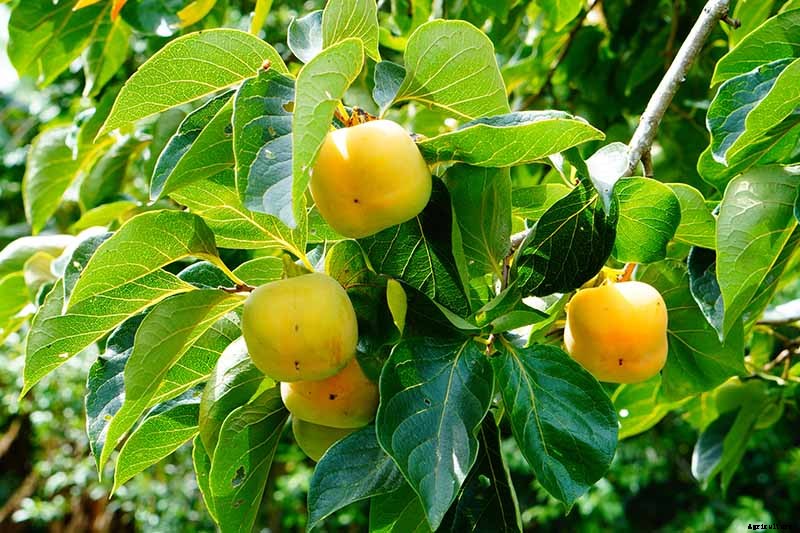
オセージ族とクアポー族の一部の先住民は、マッシュポテトのパンを作りました。 茹でて、 天日干しまたはグリルしたパルプ、 他の部族は果物を保存するためにそれらを乾燥させました。
後で、 ヨーロッパ人の入植者は、地元の果物にも感謝することを学びました。スペインとフランスの探検家は、果物をプラムやセイヨウカリンのようなものとして説明しました。
ジェームスタウンのジョン・スミス大尉が柿を噛んだとき、 彼はその経験を見つけました…印象的ではありませんが、 C.H.によるとブリアン、 誰のために書いた ハント研究所植物ドキュメンテーション 。
「…熟していないと、男の口が痛くなります。 多くの苦痛を伴い、 " 彼が書きました。熟したとき、 しかし、 彼はその果物は「…アプリコックと同じくらい美味しかった」と言った。
植物、 樹皮と葉を含む、 下痢を治療するために医学的に使用されてきました、 赤痢、 熱、 梅毒、 とツグミ、 他の病気の中で。
果物はまた、アルコール飲料を作成するために使用されています、 ビールを含む、 ブランデー、 とワイン。南北戦争中、 種子はコーヒー代用品として使用されました、 酢は果肉から作られました。
そんな最近の栽培の歴史があるので、 私たちは、野生の植物が人間の庭師によっていつどのように形作られ始めたかについてかなり良い考えを持っています。
1800年代後半の初期のブリーダー パデュー大学の園芸教授ジェームズ・トループとアイオワ州園芸協会の会員が含まれていました。 およびF.O.ハリントン、 ヨークセンターから、 アイオワ。
最近になって、 植物育種家のジェームズ・クレイプールは2人以上と協力しました 害虫や病害への耐性が向上し、より大きく生産された樹木を選択するための000種類の柿品種 より良い味の果物、 そして早く熟した果実。
ジョセフ・C・マクダニエル、 イリノイ大学の園芸教授、 これらの木の家畜化と繁殖にも大きな影響を与えました、 「ジョンリック」と「フローレンス」の選択を担当しています。
私は言及を怠るのを怠るでしょう ジェリー・リーマン 。 2019年に亡くなったインディアナ州の実験果樹園を持つ栽培者、 リーマンは、インディアナ州の商業農家が栽培できるアメリカガキを作ることで、インディアナ州の農家を支援したいと考えていました。 そして彼はそれを実現するために彼の人生のかなりの部分を捧げました。
彼は、柿の果実の風味とサイズを改善して、購入者にアピールできるようにするだけでなく、 しかし、彼はまた、今日存在するいくつかの非収斂性の栽培品種を育てました。

柿はの備品としても紹介されています ガーデニングの民間伝承 慣れている 天気を予測する 。
例えば、 種を割って開き、スプーンのような形をした子葉を見つけることは、雪の降る冬が来ることを示していると言われています。 フォーク型の子葉は穏やかな季節が来ることを示していますが、 ナイフの形をした種の内臓は、厳しい寒さを予測すると言われています。
アメリカの品種になると、 2つのタイプがあります:60の染色体を持つ四倍体、 そして90の染色体を持つ六倍体。 アボカドに似ています 栽培にいくつかの種族がある別の果物として、 90染色体タイプと60染色体タイプで。
育種プログラムで購入または見つけることができるほとんどすべての品種は、90染色体タイプです。
これらは他の品種から果実への受粉を必要としません、 そして、それらは通常より早く熟し、60染色体タイプのものより少し甘い大きな柿を生産します。四倍体(60染色体)の品種は、果実生産のために受粉を必要とします。
60染色体の木が90染色体の木を汚染するとき、 得られた果実は通常種なしですが、 またはほぼそう。
伝搬
ほとんどの種類の果樹の場合と同様に、 柿を繁殖させるためのさまざまなオプションがあります、 種を始めることから、吸盤を掘り起こし、移植することまで。
どちらの方法を選択しても、 一般的には賢明なアイデアです 土壌をテストする 植える前に、 窒素の深刻な不足がないことを確認するために、 カリウム、 またはリン(NPK)。
土壌が特に圧縮されているか栄養素が不足している場合は、よく腐った堆肥で作業してください。砂を加えて粘土土をほぐすこともできます。
受粉のために、異なる品種のオスとメスの木を一緒に植えなければならないことを忘れないでください、 自家受粉品種を選択しない限り。アメリカの柿はアジアの柿と他家受粉しません。
受粉のために別の木を必要とするタイプがある場合、 それは植えるのに役立ちます 花粉交配者を引き付ける花 あなたの木の周りの蜂や蝶のように。
花が咲くまで、オスかメスかはわかりません。
シードから
ほとんどの落葉果樹と同様に、 一般的な柿は、種からタイプするのに忠実に成長しません。種子も発芽率が低く、 しばらくの間、オスとメスを区別することはできません。しかし、 手元にかなりの時間があり、自宅で試すための手頃なプロジェクトを探している場合は、 これが進むべき道かもしれません。
シードから始めるときは、 あなたの植物は、最大10年間、適切なサイズの収穫を生み出さない可能性があります。場合によっては、 全くない。
しかし、 あなたがそれらを育てようとしているところならどこでも直接播種された柿は、その場所によりよく適応することができます、 その場所の排水が悪い場合や、岩が多すぎる場合でも。
あなたもすることができます 屋内でシードを開始します 必要に応じてコンテナに入れます。春にあなたの地域で最後の霜が降りる約10週間前に、種子をコンテナに入れることを計画してください。
それらは一般的ではありませんが、 専門小売店からシードを購入できます。
あなたはそれらを植える前に種子を冷層化する必要があります。それは、湿ったペーパータオルでそれらを包み、それをジップトップバッグに入れることを意味します。種を冷蔵庫に3ヶ月入れ、 タオルが湿っていることを頻繁にチェックします。
3ヶ月が経過した後、 4インチのコンテナ内の種子開始培地に1インチの深さで種子を植えます。 またはあなたがそれらを育てようとしている土壌にそれらを置きます。
必ず「目」を上にして土に種を入れてください。それはわずかな開口部がある丸い端です。
生分解性の使用を検討する必要があります 泥炭ポット 移植中に引き起こされる根への外傷の量を減らすために、地面に直接植えることができます。
土壌を湿らせておきますが、成長するにつれて湿らないようにします。よく絞られたスポンジについて考えてみてください。あなたはあなたが目指している水分のレベルについて良い考えを持っています。
述べたように、 種子の発芽率は低く、発芽するまでに最大2か月かかる場合があります。必要以上に植えることを検討してください。 あなたがいくつかの健康な苗と少なくとも1つの女性と1つの男性の植物を持っていることを確実にするために。
鉢植えの苗を明るい場所に置き、 1日8時間の間接光。
彼らが数枚の葉を育て、少なくとも6インチの高さになったら、 あなたは春に庭にそれらを植えることができます、 結局、霜のリスクは過ぎ去りました。一定期間硬化した後、移植するのと同じように、コンテナで育てた苗木を植えます(以下で説明します)。
硬化は、植物を徐々に屋外の状態に導入するプロセスです。通常、 これは、苗を1時間外に持ち出し、間接的な日光に当てることを意味します。
次の日、 1時間を追加し、 そして翌日さらに1時間、 植物が8時間間接的な日光の下で外にとどまることができるまで。それで、 地面に着く準備ができています。

Diospyros virginiana シード
4シードのパッケージを購入できます アマゾンから 。
挿し木から
好きな植物を簡単に複製できるので、果樹から挿し木をするのが大好きです。
春に、 植物が休眠状態から抜け出し、葉を出した後、 鉛筆と同じくらいの太さの枝を選び、長さ約10インチの切り込みを取ります。カッティングの下半分から葉を取り除きます。
自家受粉品種を利用できない場合は、必ず雄と雌の両方の木から挿し木を取ります。
カットエンドを約45〜60度の角度でスライスし、粉末の発根ホルモンまたはクローニングジェルに浸します。

オリビアのクローニングジェル
私はオリビアのクローニングジェルを使用することを好みます、 そして、次のことができます ArbicoOrganicsでピックアップ 。
よく腐った堆肥で作業して、屋外で土壌を準備します。 または、6インチの鉢に培養土を入れます。鉛筆や箸を土に刺して穴を開け、 カットを半分ほど挿入します。カッティングの周りの土をそっと押して、所定の位置に固定します。
井戸、 刈り取りが根付き始めても、土壌を湿らせますが、ねばねばしないようにします。 これは約4週間で起こります。その時点で、 いくつかの新しい葉が形成されているのが見えるはずです。
小枝を軽く引っ張って、抵抗するかどうかを確認します。もしそうなら、 それは根が形成されたことを意味します。この時点で、根付いた挿し木を他の移植と同じように扱います。 コンテナで育てた場合は、最初の霜があなたの地域に到着する約1か月前に、植物を地面に置きます。
吸盤から
アジアの柿の木は吸盤を送りません、 しかし、アメリカのものはそうします。吸盤は、植物から数フィート離れた土壌から出てくる小さな蘖です。それらは地下の根に付着しています、 そして、それらを使用して新しいツリーを伝播できます。
それらは親の木と同じ遺伝子構成を持っています、 つまり、自家受粉品種がない場合は、オスとメスの木から吸盤を集める必要があります。
それらを収穫するのに最適な時期は、植物が新しい成長を送っている春です。 しかし、それが熱くなりすぎる前に。
少なくとも3枚の葉のある吸盤を見つけて、そっとその周りを掘ります。根を傷つけないように、根に近づきすぎないようにします。 だからあなたが掘るときに吸盤の周りに4インチのマージンを残します。主根に出会うまでゆっくりと土を取り除き、 次に、剪定はさみで主根から吸盤を切り取ります。
水平方向の根を切り取り、 垂直を残して、 繊維状の根が所定の位置にあります。
吸盤に3枚以上の葉がある場合、 余分な葉を切り取り、葉ではなく新しい根が成長するように促します。
吸盤を屋外の準備された土または培養土の入った容器に植えます。最初の数ヶ月は土壌を湿らせておきます。
コンテナに植えた場合、 秋に移植、 移植の指示に従ってください。
ベアルーツから
裸根植物は春先に地面に行く必要があります。植えるのが遅すぎたくないのですが 裸根が休眠状態から抜け出し、ストレスがかかり、移植に耐えられなくなる可能性があるため、新しい成長を開始した後。
あなたがそれらを地面に置く前に、 枯れた根や枝を切り取ります。
根が生きているのか死んでいるのか見分けるのは難しいかもしれませんが、 彼らはしばしば黒または暗褐色なので、 少し曲げてください。彼らが柔らかく感じて跳ね返ったら、 彼らは生きています。それらがスナップした場合、 ルートを切り取ります。
また、茎の長さを約半分に剪定して、より茂った成長を促し、最初に定着するときに根が過度の上部成長によって過度に負担にならないようにする必要があります。
移植と同じように植えます。
苗木と移植から
アメリカガキの移植は見つけやすくなっていると思いますが、 そして、改良された栽培品種を作るために働いているブリーダーのおかげで、これまで以上に多くの品種があります。自家製の果物をすぐに手に入れたい場合は、 苗木を購入するのが道です。
苗床で育てた苗木や苗木を植えるのに最適な時期は、春です。 霜のリスクが過ぎた後、 または秋に、 お住まいの地域で予想される最初の霜の数週間前。
自家受粉していない品種がある場合は、 移植片を購入することは、男性と女性の両方の木を確実に手に入れるための簡単な方法です。受粉を容易にするために、それらを50フィート以上離さないようにしてください。 十分な空気の流れと成長する余地を確保するために、互いに、および近くの構造物から20フィート以上離れている必要があります。
これらの木は長いので、覚えておいてください。 深いタップルート、 大きくなりすぎたり、柵に侵入し始めたりすると、後で移植することはできません。 建物、 または他の植物。
植物を取得したら、 土を準備し、それが成長しているコンテナの少し広く、少なくとも2倍の深さの穴を掘ります。そのコンテナから移植片をそっと取り除きます。プラスチック容器の側面を注意深く押すか、地面に沿ってゆっくりと転がして土のボールを緩めるのが最も簡単だと思います。
植物がコンテナで成長しているときと同じレベルに座るように、穴を土で埋めます。私たちが必要以上に深く掘る理由は、それらの深い根が土壌に成長するのを促進するためです、 そのため、地球は緩く、簡単に膨張します。
植物を穴に入れ、根球の周りに追加の土をそっと埋めます。井戸。
柿は深い根源を発達させます、 そのため、成熟するにつれて移植が困難になります。購入後、できるだけ早く移植片を地面に置くようにしてください。 そして、彼らが永続的に成長できる場所を選択し、 彼らの生涯にわたって。
私はこれを、私が植える前に、1つか2つの植物を購入し、それから数ヶ月間それらを彼らの容器に置いたままにしていた罪を犯した人として言います。ギボウシを使えば、そのような悪い行動から逃れることができます。 私が発見したように、 でも柿がうまくいかないとごめんなさい。
苗木が傾いたり、強風に襲われたりするのを防ぐために、植え付け時にステークキットを使用することをお勧めします。

デューイットツリーサポートステークキット
ネイチャーヒルズ保育園 Dewitt Tree Support Stake Kitを搭載し、 必要なものがすべて含まれています。
成長する方法
冬に寒くなる地域に住んでいない限り、 これは、さまざまな条件にかなり適応できるツリーです。
D. virginiana -25°Fまでの温度に耐えることができます、 しかし、あなたが定期的にこれよりも低い気温を経験する場所に住んでいるなら、 この木を育てるのを忘れることができます。ごめん!
この種は、栄養素が少ない貧しい土壌を処理することができます、 ロッキー、 または砂浜、 水はけの悪い場所、 そしてその間のほとんどすべて。

もちろん、 高収量で豊作を望むなら、木が成長し繁栄するのに好む理想的な条件を木に与えようとします。 そして病気を避けるために。
つまり、水はけの良い場所に植えることを意味します。 ローム質土壌。 6.0から6.5の間のpHを目指してください。
植物が必要 完全な太陽 それらの潜在能力を最大限に発揮し、達成するために、 しかし、それらは部分的な太陽または部分的な日陰でも成長する可能性があります。完全な太陽の下で育つよりも日陰で育つと、果物が少なくなる可能性があります。
彼らが若いとき、植物に十分な水を与えておいてください、 しかし、彼らが成熟するにつれて、 彼らはいくつかの干ばつを処理することができます。周りを提供する計画 週に1インチの水 成長期には、 雨が降らないと仮定します。
土壌の上部2インチは、水やりの合間に乾かす必要があります。
毎年春にバランスの取れた肥料を適用し、 植物が実をつけ始めた年齢に達した後に始まります。

地球博士の果樹肥料
アース博士の果樹肥料が好きです。 あなたができる ホームデポで見つける 。パッケージの指示に従ってお申し込みください。
1インチの厚さを配置します 有機マルチの層 、 腐った木材チップなど、水分の保持を助け、土壌に栄養分を供給します。
ドリップラインに塗って、 ただし、木の幹に権利を与えることは避けてください。 6インチのマージンが理想的です。毎年春に根おおいを再適用します。
剪定、 トレーニング、 とメンテナンス
必須ではありませんが、 剪定はあなたの収穫を改善し、あなたの木をより魅力的に見せることができます。
5歳未満の若い植物の場合、 弱いものを取り除く、 薄い、 病気、 または春先に枝を渡る、 新しい成長が現れる前に。

広い股角で枝を保持し、 股間の角度が狭いと枝が弱くなり、果物を積んだときにひびが入ったり折れたりする可能性があります。
木の主要な構造を形成するために、外側に向かって約5つの主要な枝を残したいとします。
春に新芽が出現すると、 最初の5年間は、 分岐を促進するために、それらを約3分の1にトリミングします。
その後、 この方法で若い木の剪定をやめ、メンテナンスに集中することができます。
メンテナンスの剪定に関しては、 やりたくないのなら、あまり大騒ぎする必要はありません。
剪定が多すぎると果実が落ちますが、 ですから、そのことに注意し、船外に出ないでください。そうは言っても、 少しの剪定は新しい成長を促し、花や果物は新しい木から出てくるので、 これにより、歩留まりが向上する可能性があります。

必要に応じて 冬に木を剪定して、見た目に美しい形を作ります。 葉が落ちた後、新しい成長が始まる前。
私は自分の植物を少し丸く保つのが好きです、 だから私は他の枝よりも高く突き出ている枝を取り除きます。植物の見た目が少し自然になってもかまわない場合は、 形の剪定について心配する必要はありません。
年間を通して、病気にかかった枝や枯れた枝を取り除きます。また、気づいたときにこすったり交差したりする枝を取り除くことで、木を少し細くするのも好きです。
最も一般的な栽培品種は、野生の木ほど高くは成長しませんが、 約30フィートを突破します。あなたの木が高くなるなら、 収穫を容易にするために、剪定して戻すことをお勧めします。
成長しすぎる果物は収穫が困難です、 熟したときにその高さから地面に落ちたら、 彼らはどろどろした混乱に突入します。
上記の隔年結果について話したことを覚えていますか?すべての柿がこれを経験するわけではありません、 しかし、もしあなたがそうなら、 あなたはそれが若くてまだ形成しているときに果物のいくつかを取り除くことによって物事を平準化するのを助けることができます。
来年の作物を生産する花は、木が実を結ぶ間にすでに形成され始めています。重い作物を生産している場合は、 これにより、花の生産に必要なエネルギーの多くが奪われ、次のシーズンの収穫量が少なくなる可能性があります。
バリカンを使用して、各枝で成長している果実の3分の1を均等に切り取ります。

アメリカガキはたくさんの吸盤を送ります、 地面から出てきたら、引き上げるか切り落とす必要があります。
それは終わりのない仕事です、 しかし、吸盤を所定の位置で実物大の木に成長させると、 彼らは栄養素と空間を求めてあなたの既存の植物と競争します。
いくつかを伝播したい場合は、 上記の指示に従ってください。さもないと、 これらは堆肥の山に投げることができます。
秋に、 果物や落ち葉は必ず片付けてください。
これは、落ち葉や果物に冬の間立ち往生する害虫や病気のいくつかを回避するのに役立つため、一般的にすべての果樹にとって良い考えです。落ちた果物はまたあなたの庭にいくつかの望ましくない野生生物を引き付けるかもしれません。
成長のヒント
- 水はけを良くし、 健康な植物のためのローム質土壌、 そして最高の収量。
- 確立された植物は干ばつを処理することができます、 しかし、理想的には通常の水を与えられるべきです、 週に約1インチ。
- 剪定はあなたの植物がより多くの収穫を生み出すのを助けるかもしれません、 ただし、本番環境では必要ありません。
選択する品種
悪い知らせがあります。ほとんどの大規模な苗床は、一般的な柿を運びません。 またはもしそうなら、 彼らは栽培品種についての情報なしで一般的な名前でそれらを販売します。しかし、探す価値のある素晴らしい品種がいくつかあります。

アメリカガキ
植物を調達するために専門の苗床または地元の愛好家に確認してください。 ネイチャーヒルズ保育園 裸根と苗木の両方を運びます。
鹿の磁石
鹿を惹きつけたいなら、 「ディアマグネット」よりも優れた品種を求めることはできません。
果実は年の後半に形成され、 10月から12月まで 冬の間ずっと木にとどまります 鹿や他の空腹の野生生物に食料を提供します。
それはあなたがそれを楽しむことができないという意味ではありません、 同様に。それはおいしいです、 刺激的な2インチの果物で、 風味豊かな、 甘い肉。この収斂性のあるタイプは、口に合うように熟しすぎる必要があります。
これらはゾーン4まではさらに困難であり、自家受粉します。 そのため、収穫を行うために近くで雄木を育てる必要はありません。
ドリーウッド
「ドリーウッド」はおいしい果物を生産します、 しかし、この木で際立っているのはその成長習慣です。並外れて背が高くなることはありませんが、 しかし、優雅に泣く枝で広がります。それは豪華な装飾オプションになります。
果実は9月中旬から10月下旬に熟します。 収穫は11月まで続くかもしれませんが。このタイプは、果物を楽しむために過度に熟している必要がないため、ジェリーリーマンの最も推奨される品種の1つでした。
彼はまたそれを多作のプロデューサーとして宣伝した。
それは自家受粉です、 だからそうではありません 必要 バディ、 しかし、近くに雄が植えられていると、収穫量が多くなります。
アーリーゴールデン
この栽培品種は1800年代にまでさかのぼり、ブリーダーがここ数十年で作成した多くの新しい栽培品種の親植物です。
それは直径約1.5インチに成長する黄金色のオレンジ色の果実を持っています、 甘いもので、 マイルドな味わい。植物は比較的小さいままです、 約10フィートを突破し、 そのため、コンテナの栽培に最適です。
これは、ゾーン4まで北の冬を乗り切ることができるもう1つのタイプです。9月から収穫の準備ができています。 食べる前に果物を柔らかくすることが重要です。
近くに雄木がなくても実を結ぶでしょうが、 男性の花粉交配者と一緒に植えると、はるかに良い収穫が得られます。
アーリージュエル
これはアメリカガキの最も初期の結実タイプの1つであり、非常にかなり真っ赤な果実を持っています。 そのため、その名前はこれ以上適切ではありません。
それはほとんどの品種よりも早くベアリングを開始し、一貫した、 重い作物。果実は種なしで、9月に摘み取る準備ができています。熟したとき、 彼らは甘くて風味豊かです。
これは別の自家受粉品種です。
キレン
先ほどパルプの黒い斑点について言及したことを覚えていますか?この品種にはそれがありません、 そして肉は欠陥がないことで知られています。中型の果物は非常に甘く、直径は約1インチです。
「キレン」は、成熟すると約25フィートの高さに達します。 果物は10月中旬頃に収穫する準備ができています。食べる前に柔らかくしてください。収穫を得るために、この栽培品種の2本目の木は必要ありません。それは自家受粉です。
リーマンの喜び
これは新しい自家受粉品種であり、 ジェリーリーマンによって飼育されています。それは滑らかで直径3インチまで成長する信じられないほど大きな果実を持っています、 甘い肉。
木はコンパクトなままですが、風味に優れた果実をたくさん生み出します。熟すのが遅い、 10月から果物が始まります。果物は柔らかくなければなりませんが、掘り下げる前に過度に熟している必要はありません。
モリスバートン
私が触れたアメリカガキのユニコーン、 the rare non-astringent variety? This is the granddaddy of them all.
Though the other existing non-astringent types haven’t been named or made widely available, they are all bred from ‘Morris Burton.’
It isn’t a prolific producer and can be slow to produce, but breeders are working on using it to create new varieties that are improved in these areas.
You can eat the fruit when it is firm, or let it ripen fully. It gets sweeter as it gets softer. This one is also self-fruitful.
害虫や病気の管理
American persimmons are extremely resistant to pests and diseases. You won’t need to spray your trees to protect them against problems because they’re so readily able to withstand issues.
そうは言っても、 there are a handful of things to watch out for.しかし、 if you keep trees healthy by watering them appropriately, pruning if necessary, and planting them in a location where they receive a good amount of sun, they should be able to withstand most problems.
また、 be sure to clean up any plant debris in the fall.
草食動物
While you might get a break from most pests and diseases while growing persimmons, you’re going to have to go to battle with animals that are looking for a snack.
Birds
All kinds of birds will dine on persimmons, from chunky turkeys to petite warblers. My advice for you is to either net your tree when the fruits are about a month away from harvest time, or just accept your fate.

You’ll still get lots of fruits and the local bird population will thank you for the bounty.
As a bonus, birds can even help you to eliminate pests, not only from your persimmon trees, but from the rest of your garden as well. They’ll come for the fruit, and take care of the bugs as well.
In other words, you give the birds some food and they’ll help to keep your garden healthier. Win-win, right?
鹿
Deer love persimmons so much that when hunters want to attract them, they will often use a product made from the tasty fruits. Deer will nibble on the fallen fruits in your garden and in the wild, and they’ll grab low-hanging, ripe ones off the trees.
They’ll also eat the twigs and leaves, which is especially damaging to young trees or saplings.
Fencing is the best way to keep deer out of an orchard, 私の意見では。 We also have a full guide to keeping hungry ungulates out of your garden 。
Rats
Rats and other types of rodents (as well as squirrels, but I’ll touch on them in a bit more detail below) are particularly fond of fallen fruit. You can be sure when fruits begin to pile up on the ground, the rats and mice are on their way.
Repellents work well to discourage rats from visiting your tree.

Bonide™ Rat Magic
Arbico Organics carries Bonide™ Rat Magic. You can sprinkle the granules around the base of the tree to make it a less appealing option to rodents.
そうは言っても、 your best bet is to rake up or remove any fallen fruit right away so that they don’t have a regular food source drawing them into the area.
Squirrels
In the grand scheme of things, squirrels aren’t that big of a deal, but they annoy me because they go for the fruits before they’ve had a chance to ripen. Sometimes they steal them, other times they just take a nibble from a bunch and leave them hanging on the tree.
Squirrel baffles or collars stop them from climbing up the trunks, but they can still leap from nearby trees or buildings into your trees. And if you’ve ever seen a determined squirrel, you’re well aware that there’s pretty much no stopping them.
Given that a squirrel’s large area to mass ratio means these animals can fall from any height and hit the ground at exactly the same speed, likely surviving, you have a real challenge on your hands.
If I was hungry and I knew jumping from the top of a house to a nearby tree and missing it probably wouldn’t kill me, I’d be leaping around like a maniac (which probably means I wouldn’t survive long in the wild).
You can purchase deterrents, but I don’t find they do much good when the squirrels are seeking persimmons. What works better is to put feeders in nearby trees to lure them away. With an additional food source that’s readily available, they shouldn’t eat enough fruits to really impact your harvest.
昆虫
American persimmons are unbothered by insect pests for the most part, but they aren’t completely immune.
Here are the most common pests to watch for.
Borer
Persimmon trunk clearwing borers ( Sannina uroceriformis ) bore into the trunks of trees, as you might have guessed from the name.
The adults are black moths with a red band across their bodies. They look a little like wasps.
They lay eggs at the base of trees, and the larvae that hatch out bore into the plants, eventually tunneling up the trunks and pupating in cocoons.
The most serious damage occurs below ground, but you may notice frass (it looks like sawdust) or a black, gummy substance oozing out of infested trees. When the roots are damaged, trees may become weak and the leaves might wilt.
The bugs can even girdle a young tree and kill it.
If you suspect you have this particular pest, you’ll need to dig down into the root area and look for hollowed out roots and holes made by the borers at the base of the trunk.
You can cut out infected roots, and use a knife to dig out the bugs from inside the holes.それ以外、 there is no effective control option available.
The best defense is a good offense, and healthy trees are less susceptible to succumbing to an infestation.
Hickory Horned Devil
I always think this pest sounds more like a high school mascot (go Hickory Horned Devils!) than an insect hell-bent on defoliating young persimmon trees, but ( Citheronia regalis ) is most definitely the latter.

The adults are known as regal or royal walnut moths, and they are quite beautiful.
They are reddish-brown or orange with gray-green spots and yellow banding. They can have a wingspan of nearly six inches.

The caterpillars are also quite attractive looking, in my opinion, growing to about five inches long. They’re blue-green with orange and black-tipped scoli, protruding growths covered in black bristles, which look like a crown of horns.
They may have black markings on their heads and lower body segments, along with shorter black scoli along their bodies.
If you see either adult moths or the caterpillars, don’t kill them. They are an important native insect in the Eastern half of the US as pollinators and food sources for other animals.
So how do you stop them from chomping on the leaves of your trees? If you spot them on mature trees, just wave hello and leave them alone. A large tree won’t lose enough leaves to the nibbling caterpillars to be impacted.
If they are on a young tree under ten years old, gently remove them and place them on a mature persimmon tree instead, or on a mature hickory, sumac, or sweetgum tree because these plants also serve as hosts.
These caterpillars also have several natural predators, including parasitic wasps and flies.
Persimmon Psyllid
These tiny pests ( Baeoalitriozus diospyri また Trioza diospyri ) are black or tan insects about the size of an aphid (about 0.15 an inch). They can fly or jump and they secrete honeydew as they suck on plant juices.
They are most common in the spring as the weather starts to warm up. Once it gets hot, the populations tend to shrink.
While they can harm Asian trees, they tend to not cause much damage to American varieties. Native wasps and other natural predators tend to keep numbers under control.
If they do cause some damage, you might see curled or distorted leaves.

Monterey Horticultural Oil
Monterey horticultural oil, ArbicoOrganicsで入手可能 、 controls populations without harming beneficial insects.
Spray on trees in the springs as the bugs start to emerge.
Twig Girdler
Twig girdlers ( Oncideres cingulata ) are little beetles that not only attack persimmons, but hickories, elms, と pecan trees 同様に。 Even worse, they spread persimmon wilt.
An adult female lays eggs in the early fall, girdling stems by gnawing a circle around the branches as she does so. She lays her eggs in that circular cut, and eventually, the branch may fall to the ground so her offspring can dig down into the soil.
The adults are gray and about three quarters of an inch long. They have two dark bands across their wings and long antennae.
The falling branches aren’t a big deal, and you could safely ignore this pest if it didn’t spread disease. Unfortunately that is not the case, but luckily for you, control is easy.
Pick up any fallen branches right away and burn them to kill the larvae. If you can’t burn plant debris in your area, seal them in a bag and toss them in the trash.
That doesn’t stop the disease from spreading, しかし、 since these bugs carry persimmon wilt and have already nibbled on your tree. That means it’s too late to stop them from potentially transmitting the disease to your plant.
Read more about this disease below to learn how to deal if your tree comes down with wilt.
Webworm
Webworms ( Seiarctica echo ) can seriously damage young trees, though older trees are more resistant to harm.
It’s easy to tell if you have this pest in your yard because you’ll notice big white tent-like nests in persimmon, sweetgum, pecan, and other types of trees.
The pests hang out in the soil underneath leaf litter during the winter while they pupate, and emerge in the spring as white moths. They lay eggs on the leaves, which hatch into caterpillars that spin silken webs.
The caterpillars create tents for protection and they feed on foliage inside these webs. That can spell disaster for a young tree.
This is the part that gives me the chills to write, but it’s the best way to control these pests:
Go outside with a broom or rake when you see the webs, and sweep the worms out and away from the tree.
I’m warning you right now, wear a hood. And maybe a hazmat suit.わかった、 that may be a bit extreme, but after you’ve found a few of these fuzzy wigglers in your hair or crawling down the back of your neck, you won’t want to mess around.
Once you’ve knocked the webs out, rake up the ground surrounding the tree and burn them or bag them up, seal the bag, and toss it in the trash. In the fall, clean up all of the fallen leaf litter to deny them a place to overwinter.
疾患
American persimmons are bothered by just a few diseases, and as with pests, it’s pretty rare that you’ll encounter them.
To help avoid diseases, don’t plant your persimmon with peach or mango trees, which suffer from similar issues.
炭疽病
Also called leaf spot, anthracnose is caused by types of fungi in the コレトトリカム 属。 An adult tree won’t die from this disease, but it can impact your harvest.
You’ll see dropping leaves, and foliage that’s covered in black spots. The spots can be sunken into the surface of foliage, and you may see lesions on the bark as well as the fruit.

Bonide™ Copper Fungicide
Bonide™ Copper Fungicide dust, ArbicoOrganicsで入手可能 、 is a good treatment option to cure the disease, and you can apply it up to about a week before harvest.
Combine it with water in a hand sprayer and cover the tree as soon as you notice symptoms of this disease. You may need to spray more than once, but use caution. Copper can build up in the soil and kill beneficial microbes.
Persimmon Wilt
Remember how I said persimmons are pretty resistant to disease? This one might be its Achilles’ heel. Cephalosporium diospyri can kill a tree within a few months.
The first sign is wilting foliage, which starts at the top of the tree. Then you’ll see bark beginning to separate from the tree, with red blisters underneath. If you cut the tree down, you’ll see black streaks throughout the rings.
Eventually, the bark ruptures, and the spores escape into the air to attack other trees.
This fungal disease can infect trees that have been damaged by twig girdlers, and the bugs carry the fungi. Controlling these insects is your best bet for keeping this disease away.
If your trees incur any damage from pruning, weed whacking, or mowing, these should be covered with wax to prevent the fungus from taking hold. This is especially true if there are any other trees that have been attacked by the fungus already.
If a tree becomes extremely infected, you’ll need to cut it down and burn it to prevent the fungus from spreading. You can also cut the entire tree down and dispose of it, but don’t use any parts in your compost pile or you risk spreading the fungus.
収穫
Trees take about four to nine years to start fruiting if you planted a young seedling. Grafted trees and saplings are faster because they are older when you purchase them, and these are typically ready to harvest from in just three to five years.

A mature tree can give you anywhere between 35 to 75 pounds of fruit per season, depending on the growing conditions and the cultivar.
There’s a common misconception that you have to let American persimmons go through a frost before you can harvest the fruit. In reality, you simply need to wait for the fruit to become completely ripe, which takes time.
When you go out to pick your fruits, don’t use a bag! I know they’re convenient, but the fruits will get all mushy and smashed, and you’ll end up with a bag full of persimmon mess. Use a bucket or basket with firm sides instead, and don’t pack them too deep.
Snip the fruits off the tree using a pair of pruners, and leave the cap in place when harvesting.
The green, leafy cap at the stem end is technically known as the calyx. Leaving it in place helps the fruit stay fresh longer.
You can also lay out tarps or a three-inch layer of straw and let the ripe fruit fall on their own. Just make sure to go out and grab them before the rodents, 鹿、 or wild turkeys do.
If you plucked your treasures before they ripened fully, put them in a bowl with fruit that puts off a high amount of ethylene gas, such as apples or bananas. This will hasten the ripening process.
あなたはについてもっと学ぶことができます how to harvest persimmons in this guide 。
Preserving
Ripe fruit can be kept in the refrigerator for about a week, or you can freeze the fruits for up to nine months.

Freezing can also help to remove the astringency if you had to pluck your fruits from the tree before they were fully ripe.
To do this, wash the fruits and slice them into quarters after harvesting. Wrap them in foil or place them in plastic baggies and seal them up. After they have frozen solid for at least 24 hours, remove them from the freezer and allow them to thaw out completely.
It actually appears to be the thawing process that removes the tannins, so don’t skip this step and take a bite out of a frozen persimmon!
You can also freeze whole, ripe fruits for eating later. Wash and dry them and place them in a sealable plastic bag. If they were ripe before freezing, you can slice them in half after they have thawed slightly and eat the frozen flesh like a sorbet. It’s delicious.

Dried persimmons are a delight. They’re sort of like a date in flavor, but with subtle notes of clove, caramel, and cinnamon.
To dry whole fruits, you need to start with ones that are slightly underripe. If you try to dry the extremely ripe ones, you’ll end up with a finished product that is chewy on the outside with a weird, unappealing brown powder inside where the flesh used to be.
If you have fruits with seeds, you may want to slice them in half and remove them first so you don’t have to contend with seeds when you’re eating the finished product.
You can go the old-fashioned way or the speedy way to dry the fruits. The old-fashioned way involves washing, drying, and putting them on drying racks over a wood stove, or hanging them in an area that is dry and warm. Turn or rotate the fruits daily, and in a few weeks, they should be good to go.
The fast way involves putting the cleaned fruits in a food dehydrator, or you could dry them in the oven on the lowest setting, which is usually around 170°F.
Place the fruits on a baking sheet and put them in the middle position of the oven. Bake until they are dry and leathery, typically for around 10 hours, checking them occasionally.
If you’re interested in adding a food dehydrator to your collection of kitchen appliances to help you to preserve your homegrown harvest, you can read all about these on our sister site, 食品 。
ついに、 processing the pulp to make a puree for storage allows you to enjoy the fruits for a long while, particularly in homemade desserts. Slice the fruits in half, scoop out the flesh, and pick out any seeds. Put it in a bowl and blend it with a hand blender, or pour it into a blender or food processor and puree it.
Lay a piece of cheesecloth or place a sieve over a bowl and pour the pulp into it to remove any impurities, like small seeds or bits of skin. Remember that the pulp might have black flecks in it, but this doesn’t impact the flavor or quality.
Freeze the pulp in jars for up to a year, or store it in the fridge for three months. The pulp is out-of-this-world for use in desserts or as a topping for yogurt, which is what we’ll talk about next.
レシピと料理のアイデア
Oranges are often in the spotlight when it comes to high vitamin C content, but persimmons (both Asian and American) actually contain more of this nutrient than citrus fruits.

One fruit contains about 66 milligrams of vitamin C, while a mandarin orange contains just under 27 milligrams.
Remember Jerry Lehman, who worked so hard in his lifetime to create commercially viable persimmons? He shared his family recipe for persimmon pudding over at Farm Flavor 。
I can tell you from experience that it’s well worth whipping up. It’s rich, dense, and mildly sweet with the fruity spice of the persimmon front and center.
You can also turn the pulp into a tasty fruit leather. To make it, lay plastic wrap on a cookie sheet and spread a thin layer of pulp over the plastic. Put it in the oven at the lowest setting possible.
Let it bake in the oven for a few hours until it reaches the consistency you like. My sister and I used to fight over whether it’s best slightly gooey, like taffy, or crispy and dry, like potato chips.
The best part of the process is testing as you try to figure out the answer to this.
Try using the pulp in breads, カクテル、 cookies, cakes, and as a topping for ice cream.
クイックリファレンス成長ガイド
| | | | Plant Type:Perennial fruit tree Maintenance:Low Native To:Eastern and southern United States Tolerance Clay soil, drought, frost Hardiness (USDA Zone):4-9 Soil Type:Loamy Season:Spring, fall Soil pH:6.0-6.5 Exposure:Full sun to part shade Soil Drainage:Well-draining Time to Maturity:Up to 10 years from seed Companion Planting:Flowering plants that attract pollinators like bee balm, coneflowers, マリーゴールド、 milkweed, nepeta, Russian sage, snapdragons Spacing:20 feet, depending on cultivar Avoid Planting With:Carrots, mangoes, peaches Planting Depth:1 inch (seeds), same as root ball (transplants) Order:Ericales Height:90 feet or more for wild trees, about 25 feet for cultivated trees Family:Ebenaceae Spread:25 feet or more Genus:Diospyros Water Needs:Moderate Species:virginiana Pests &Diseases:Birds, 鹿、 rats, squirrels;ボーラー、 hickory horned devils, persimmon psyllids, twig girdlers, webworms;炭疽病、 persimmon wilt
American Persimmons Are Finally Getting Their Due
Many fruit trees require careful pruning and regular spraying if you want a robust harvest, but American persimmons aren’t nearly so much work.
You don’t even have to harvest the fruits. Just lay out a tarp and let the bounty come to you.

I realize that a fruit that requires that you grow it yourself if you want a taste probably won’t ever be as popular as one that you can buy practically anywhere, but I think that just makes them all the more special.
Are you growing American persimmons?以下のコメントセクションでお知らせください。 and share your tips with the community!
との詳細については growing fruit trees あなたの庭で、 次にこれらのガイドをチェックしてください:
- How to Plant and Grow Asian Pear Trees
- How to Grow and Care for Olive Trees
- How to Grow and Care for Fruiting Cherry Trees





























